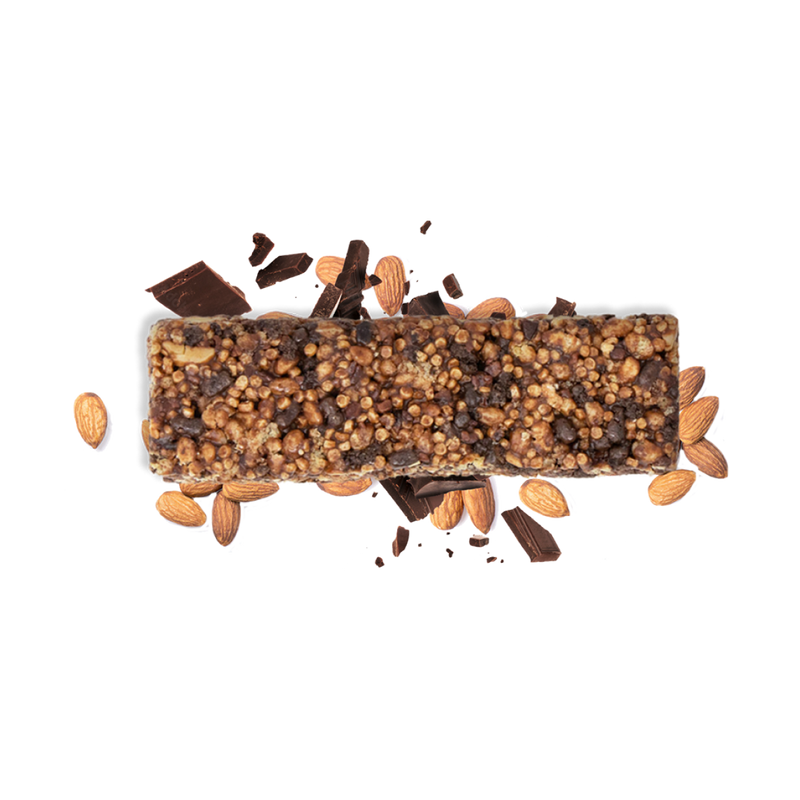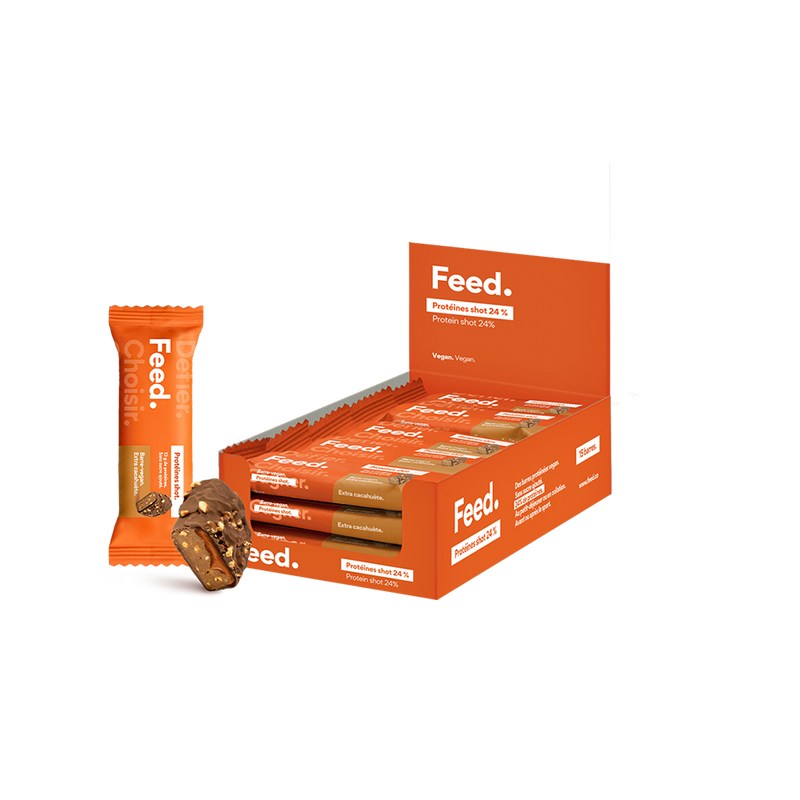Full body training is a type of bodybuilding program suitable for those looking to gain strength and muscle mass. This strength training program involves working the entire body and all the main muscle groups of the body in a single session.
Objectives of a full body workout
Full body training involves training all of the body's major muscle groups in a single strength training session. This means that each exercise will work several different muscle groups.
For example, a squat works the quadriceps, glutes, hamstrings, abdominals and lower back. A bench press works the pectorals, triceps and anterior deltoids.
Full body strength training programs are also called “multi-joint training” or “high volume training”.
A coach can help you set up a program adapted to your needs, including basic exercises to help you progress in bodybuilding. Rest days are also important for bulking and muscle gain, and should be taken into account when planning your program.
It is important to understand the goals of a full body program in order to be able to implement it effectively. The main goals of full body strength training programs are to strengthen and develop strength, endurance and muscle mass:
- Muscular strength is a person's ability to lift a certain weight repeatedly.
- Muscular endurance is a person's ability to maintain a certain physical activity for a long period of time.
- Muscle mass is an indicator of the total volume of a person's muscles as well as their ability to recover after intense physical exertion.
A full body strength training program can also be used to develop muscular power and explosiveness:
- Muscular power is a person's ability to produce maximum force in a minimum amount of time,
- Muscular explosiveness refers to a person's ability to produce maximum force in a short period of time.
Finally, this type of strength training can be useful for improving flexibility and joint mobility:
- Flexibility refers to a person's ability to perform movements requiring a wide range of motion without feeling pain or excessive tension.
- Joint mobility refers to the factor limiting the movement of a joint caused by restrictions imposed by surrounding ligaments, tendons and muscles.
The benefits of full body training
One of the main benefits of a full body strength training program is that it allows you to work all major muscle groups in a single session. This can be very effective if you are short on time to train and want to optimize your workouts.
It has the advantage of focusing on overall muscle development. A full body program involves working all muscle groups.
It allows muscles to grow while preventing stagnation in a particular muscle group.
Additionally, this form of training is very effective if you are a beginner because it allows you to quickly acquire solid skills and knowledge in physical training.
Another advantage of this type of full body program is that it can be done at home or in the gym without much effort. You can easily incorporate this into your daily routine without having to spend a lot of time and money on your workout program.
A full body workout can be helpful for burning calories and losing weight. Indeed, by working different muscle groups simultaneously, you can achieve a high heart rate which will allow your body to burn calories faster and more efficiently than if you performed isolated exercises.
Additionally, full body strength training is very effective in improving overall fitness because it allows the body to adapt to different types of exercises and varied movements.
It is important that the movements are performed correctly in order to achieve the best results while minimizing the risk of muscle or joint injury.
This requires appropriate technical mastery of movements as well as good motor coordination and good physical condition. It is also recommended to consult a qualified professional before starting a new program so that they can tailor the training to your current level and specific goals.
Full body training frequency
The frequency of full body weight training sessions is an essential element to obtain optimal results. For a beginner, a full-body strength training program can be done two to three days per week, while more advanced athletes can opt for daily or more frequent workouts.
People who already have a good fitness background may feel comfortable with more intense workouts. If you are a beginner, gradually increase the intensity so as not to injure yourself.
Another factor to consider is the duration and variety of exercises. Full-body sessions typically involve a combination of bodyweight, resistance, and cardio exercises to work the muscles of your upper and lower body at the same time. Another option is to split the full-body workout over several days, depending on your specific goals.
Athletes looking to gain strength should consider a routine that involves several sessions per week focused on compound movements such as squats, presses and pulls, while those wanting to improve their cardiovascular endurance can alternate full body days with intense cardio sessions such as sprinting or cycling.
Finally, it is important to think about recovery between sets and sessions in order to prevent injuries and optimize physical performance. A good diet combined with a sufficient amount of sleep allows the body to fully recover between each session and achieve its goals. Active or passive stretching between sessions can also help absorb shock caused by physical activity and maintain good body posture.
The duration of a full body workout
During a full body workout, the duration of the session is an essential point to achieve satisfactory results. Indeed, depending on the objectives set and the time available, the length of a session varies. So, for a complete body workout, several solutions are available to you.
If your time is very limited and you still want to train effectively, it is possible to have short but intense sessions. In this case, exercises should be chosen carefully and focus on a few muscle groups at a time. Although this method is not ideal for achieving lasting results, it can be very beneficial for saving time and maintaining and improving your overall fitness.
If time is not a limiting factor and you are looking for greater results, it will be better to dedicate more time to your full body workout. Indeed, by working each muscle group for longer and with more intensity, your results will be better and lasting.
In this type of training, you will not only need to vary the exercises in order to work different muscles but also add endurance and cardio training exercises in order to improve your overall physical condition and offer variety to the workouts.
Finally, you can divide the session into different parts that each focus on a muscle group. For example, the half body in bodybuilding consists of training half the body during each session, alternating between the upper and lower body. This allows you to progress in bodybuilding while providing sufficient rest time for the muscles in use.
And The split in bodybuilding is a training method which consists of dividing bodybuilding sessions into several parts to work different muscle groups in each session. Unlike full body training which aims to train all muscle groups in a single session, split training allows you to target each muscle group more and allow them more recovery time between sessions. Thus, by spreading the effort over several days, physical activity becomes less intense while remaining effective and efficient.
Exercises for full body training
In order to carry out effective full body training, it is important to combine multiple movements with the session which promote the development of overall muscular strength and the improvement of different muscle groups. The exercises can be varied to provide optimal stimulation and ensure that no muscle is neglected.
A complete bodybuilding session can include multi-joint exercises and isolation exercises for the upper body: shoulders, pectorals, arms (biceps, triceps, etc.), back , abs, as well as those for the lower body: buttocks ( gluteus minimus, gluteus medius, gluteus maximus), legs (ischio, quadriceps, calves, etc.).
A good program must take into account the deep muscles, which are more difficult to stimulate, such as the psoas or the transversus abdominis.
Exercises such as the squat, deadlift or pull-up work these deep muscles and achieve faster overall development. Doing cardio can also be integrated to improve endurance and progress in bodybuilding.
Regarding the use of weights, a gradual progression is recommended so as not to cause excessive stress on the body. It is important to find the right balance between loads and intensity to obtain satisfactory results, without injuring yourself or unnecessarily exhausting the muscles. You can use dumbbells, a barbell, a weight bench, high pulley and low pulley, guided and unguided machines…etc.
It is necessary to combine breaks between two sets in order to recover correctly. Rest time between sets is crucial to allow the muscles to regenerate and prepare for the next set. At the end of the session, it is recommended to perform gentle stretching to promote muscle recovery and avoid aches.
It is also crucial to ensure proper back support during exercise to protect the spine and avoid back pain after training. It is necessary to combine breaks between two sets in order to recover correctly.
The duration and frequency of breaks obviously depend on the desired objectives and the initial physical level, but they must be sufficient to allow each muscle to rest adequately. The choice of exercises depends on the time available but also on the physical level sought by the user.
The correct technique is also essential because it allows you to amplify the desired effect without risking injury. It is advisable to start with simple exercises which do not require too much effort but which nevertheless remain very effective for quickly obtaining visible results.
Examples of exercises with explanation
Here are some full body strength training exercises to perform with a weight bar and weights of varying weight depending on your level:
Squat
Place the bar on your shoulders and hold it firmly with a wide grip. Lower into a squat position until your thighs are parallel to the floor, then return to standing position by pushing through your heels.

Deadlift
Place the bar in front of you with your feet shoulder-width apart. Bend over to grip the bar, then stand up, pushing through your heels until you are standing with the bar in front of your thighs.

Rowing bar
Hold the bar with a wide grip and lean forward slightly. Pull it toward your body until it touches your chest, then release and repeat.

Bench
Lie on a bench with the bar across your chest. Raise it until your arms are straight, then slowly lower it until it touches your chest. Repeat.

Curl bar
Hold the bar with a supine grip (palms facing up) and lift it until it touches your chest. Lower back down slowly and repeat.

Shoulder press
Hold the bar behind your neck with a wide grip. Raise it above your head while pushing with your shoulders, then slowly lower it back down and repeat.

There are other exercises such as the thigh press, the seated leg curl, leg extensions, etc. Each exercise must have a defined number of repetitions and sets, with rest between sets.
Finally, it is important to adapt your diet to accompany training and take advantage of all its advantages: consume enough proteins to build muscle mass but also carbohydrates to provide the energy necessary for intense effort. and prolonged. You can seek advice from a professional in sports nutrition to support you.
In summary.
Full body training is an effective training method for working all of the body's major muscle groups in one workout. It can be very beneficial if you have little time to train or for beginners looking to work all muscle groups in a balanced way.
It is important to choose exercises that work several muscle groups at once and to vary the exercises to avoid stagnation.
Complete body training helps you improve your physical condition and well-being, and promote muscle gain. It is recommended to adapt the exercises to your level and objectives, and to vary the sessions. To maximize your results, it is advisable to get enough rest between sessions and to have nutrition adapted to your program.























